Product Features:
Customizable, peel and stick, removable.
Products Purpose :
WALL DECORATION
Provide a comprehensive selection of colors and width specifications, integrated with pre-paste technology for efficient installation.
Product Features:
Customizable, peel and stick, removable.
Products Purpose :
WALL DECORATION
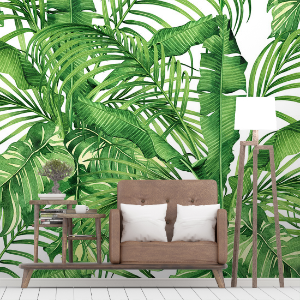
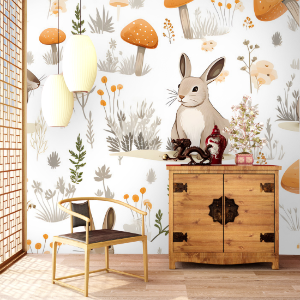
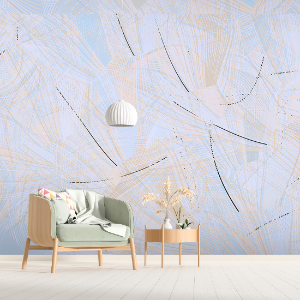
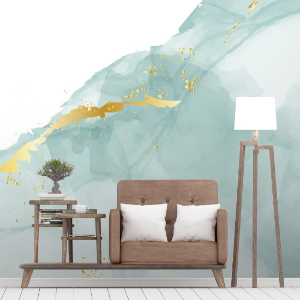
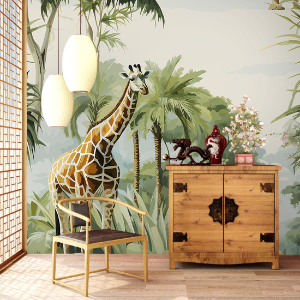
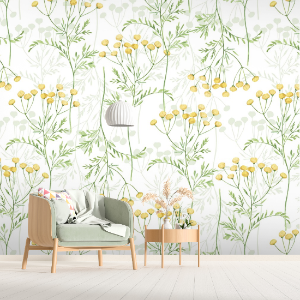
1. What wall surface is Plain Color Textured Latex Coating Wallcovering suitable for?
Suitable for various smooth wall surfaces such as cement walls, plasterboard, and latex-painted walls. However, it is recommended to ensure the wall surface is dry, smooth, and dust-free before application.
2. Will the wallpaper texture change with the light?
Yes, the fine texture creates a soft light and shadow effect under different lighting conditions, enhancing the three-dimensionality of the wall.
3. Are additional tools or glue required during installation?
No, the wallpaper uses a pre-applied technology with built-in adhesive. Simply peel off the backing paper to apply it; it's very convenient.
4. Is the wallpaper wear-resistant and scratch-resistant?
The wallpaper surface has a latex coating, providing some scratch and wear resistance, suitable for everyday use.
5. Can the wallpaper be partially replaced or replaced?
Yes, the wallpaper can be removed or replaced individually without complete removal, facilitating partial updates or repairs.
6. Is the wallpaper suitable for children's rooms or pet areas?
Suitable for use; the material is environmentally friendly and non-toxic, with a wear-resistant surface that is easy to clean of dust or minor stains.
7. How long does it take for the material to fully cure and set after application?
Generally, it will set naturally within 24 hours after application. During this period, avoid vigorous rubbing or getting it wet to ensure optimal adhesion.
When renovating a space—whether it’s a residential living room, a commercial office, or a hospitality venue—wallcoverings play a pivotal role in defining aesthetics, durability, and even indoor air quality. Among the diverse wallcovering options available, custom customizable plain color textured latex coating wallcoverings have emerged as a top choice for designers and property owners alike. But what exactly sets these wallcoverings apart? And how do the manufacturers and factories behind them ensure they meet the unique needs of different projects? To answer these questions, we’ll dive into the science of latex coating, the value of customization and texture in plain color designs, the key capabilities of reputable manufacturers, and the production processes that guarantee quality.
To understand the appeal of plain color textured latex coating wallcoverings, we first need to explore the properties of latex as a coating material. Latex, in the context of wallcoverings, refers to a water-based polymer emulsion—typically made from acrylic or vinyl-acrylic resins—that forms a durable, flexible film when dried. Unlike oil-based coatings, latex-based formulas offer distinct advantages that make them suitable for both residential and commercial applications, and these benefits are at the core of what manufacturers prioritize when developing their products.
First, latex coatings are low in volatile organic compounds (VOCs). VOCs are chemicals that evaporate into the air from many building materials, contributing to poor indoor air quality and potential health issues like headaches or respiratory irritation. According to the U.S. Environmental Protection Agency (EPA), latex-based coatings typically have VOC levels below 100 grams per liter (g/L), far lower than oil-based alternatives (which can exceed 300 g/L). For manufacturers, this means their plain color textured wallcoverings meet strict global standards—such as LEED (Leadership in Energy and Environmental Design) or EU ECOLABEL—making them attractive to eco-conscious clients.
Second, latex coatings offer excellent durability and stain resistance. When applied to a wallcovering substrate (often non-woven fabric, paper, or vinyl), the latex film creates a barrier that repels water, dirt, and common stains like coffee or ink. This is critical for high-traffic areas: a 2023 study by the Wallcovering Association found that latex-coated wallcoverings retained their appearance 30% longer than uncoated alternatives in commercial spaces like hotels or offices. Manufacturers enhance this durability further by adjusting the polymer ratio in the latex—for example, adding more acrylic resin for increased flexibility (to prevent cracking on uneven walls) or vinyl-acrylic blends for superior moisture resistance (ideal for bathrooms or kitchens).
Third, latex coatings are easy to maintain and clean. Unlike delicate fabric wallcoverings that require professional cleaning, plain color textured latex coating wallcoverings can be wiped down with a damp cloth and mild soap. This low-maintenance feature is a key selling point for manufacturers, as it broadens the product’s appeal to busy homeowners and commercial property managers who need long-lasting, hassle-free surfaces.
At first glance, “plain color” wallcoverings might seem limited in design—but reputable manufacturers and factories turn this simplicity into a strength through customization. Customizable plain color textured latex coating wallcoverings allow clients to tailor every element to their project’s unique needs, and this flexibility is what sets top manufacturers apart from generic suppliers. Let’s break down the key customization options that manufacturers offer, and why they matter:
While plain color wallcoverings avoid bold patterns, their color accuracy is critical. Manufacturers use advanced color-matching technology—such as spectrophotometers—to replicate exact hues from a client’s brand guidelines, paint swatches, or even natural materials (like stone or wood). For example, a restaurant chain might request a custom warm beige to match its brand palette, while a homeowner could want a specific soft gray that complements their furniture. Top factories maintain large color databases and offer sample production (typically 1-2 square meters) to ensure the final product matches the client’s vision. This level of precision is far beyond off-the-shelf wallcoverings, which often only come in 20-30 standard shades.
Texture is what transforms a flat plain color wallcovering into a visually interesting surface—and manufacturers offer a wide range of customizable textures to suit different aesthetics. Using specialized embossing rollers or coating techniques, factories can create textures like:
Manufacturers work closely with clients to select or even design custom textures: for instance, a hotel might request a unique linear texture that aligns with its modern design theme, while a museum could opt for a smooth, matte texture to avoid glare on artwork. The texture is applied during the latex coating process—either by embossing the substrate before coating or by adding textured particles (like fine sand or mica) to the latex formula—ensuring it bonds seamlessly with the color layer.
Every project has unique dimensions, and customizable wallcoverings solve the problem of wasted material or awkward seams. Manufacturers offer custom widths (from standard 52 inches up to 104 inches for large commercial walls) and lengths, allowing clients to cover entire walls without multiple seams. Additionally, factories can tailor the wallcovering’s backing to suit different installation methods: for example, adding a pre-pasted adhesive for easy DIY installation in homes, or a non-woven backing that’s compatible with commercial paste-the-wall techniques (which speed up installation in large spaces like offices). This flexibility reduces installation time and costs—a key consideration for both residential and commercial clients.
Not all custom customizable plain color textured latex coating wallcovering manufacturers are created equal. To ensure you’re working with a reliable partner, there are key capabilities and practices to prioritize—these are the hallmarks of factories that consistently deliver high-quality, customizable products:
Top manufacturers invest in state-of-the-art machinery to handle customization and ensure consistency. This includes:
Equally important is strict quality control (QC). Reputable factories implement QC checks at every stage:
For example, a factory might test a custom plain color wallcovering by exposing it to UV light for 1,000 hours—equivalent to 5 years of indoor sunlight—to confirm it retains its color. These tests ensure the product meets the client’s performance expectations, whether it’s for a high-traffic retail store or a residential bedroom.
Customization often means smaller order sizes—especially for residential projects or boutique commercial spaces (like a small café or boutique hotel). Reputable manufacturers understand this and offer flexible MOQs, often as low as 50 square meters. This is a stark contrast to low-quality factories, which may require MOQs of 500 square meters or more—making custom projects cost-prohibitive for smaller clients. By offering low MOQs, manufacturers open up customization to a wider range of projects, from single-room renovations to large-scale commercial builds.
Custom wallcoverings require collaboration, and top manufacturers provide expert support to guide clients through the process. This includes:
This level of support is critical for clients who may not have experience with custom wallcoverings, and it’s a key differentiator for manufacturers that prioritize customer satisfaction.
Creating a custom customizable plain color textured latex coating wallcovering is a multi-step process that requires precision and expertise. Understanding this process helps clients appreciate the work that goes into their custom product—and ensures they can communicate effectively with manufacturers. Here’s a detailed breakdown of the typical production workflow in a reputable factory:
The process starts with a deep dive into the client’s needs. Manufacturers work with clients to define:
Once these details are finalized, the manufacturer creates a technical drawing and a sample order form for the client to approve.
Next, the factory sources and prepares the raw materials:
All raw materials undergo QC checks to ensure they meet the factory’s standards—for example, testing the substrate’s tensile strength to ensure it doesn’t tear during installation.
This is the core of the production process:
After drying, the wallcovering undergoes rigorous QC:
The wallcovering industry is constantly evolving, and manufacturers are adapting to new trends to meet client demands. For custom customizable plain color textured latex coating wallcoverings, three key trends are currently driving innovation:
As clients become more environmentally conscious, manufacturers are prioritizing sustainable practices. This includes:
This trend is particularly strong in commercial projects—like LEED-certified offices or eco-friendly hotels—which require materials that align with their sustainability goals.
While plain colors remain popular, clients are increasingly requesting bold textures to add depth to neutral hues. Manufacturers are responding by expanding their texture libraries to include:
For example, a client might order a custom soft white wallcovering with a bold stucco texture for a living room accent wall—combining the simplicity of a plain color with the drama of texture. This trend allows clients to create unique spaces without relying on busy patterns.
In commercial settings—like retail stores, hotels, or corporate offices—wallcoverings are becoming a key part of branding. Manufacturers are working with clients to create custom plain color textured wallcoverings that reflect their brand identity:
This trend helps businesses create cohesive, memorable spaces that reinforce their brand to customers and employees.
In line with these trends, Shanghai MIRO Import and Export Co., Ltd. has been collaborating with manufacturers to connect clients with custom customizable plain color textured latex coating wallcoverings that meet modern design and sustainability needs. By focusing on understanding client requirements—whether for a residential renovation or a large commercial project—the company helps bridge the gap between design vision and factory production, ensuring clients get wallcoverings that are both functional and tailored to their unique aesthetic.
Custom customizable plain color textured latex coating wallcoverings offer a unique combination of aesthetics, durability, and flexibility—making them ideal for a wide range of projects. From the science-backed benefits of latex coatings (low VOCs, stain resistance) to the value of customization (exact color matching, tailored textures), these wallcoverings solve the limitations of off-the-shelf options.
When working with manufacturers and factories, it’s essential to prioritize those with advanced equipment, strict quality control, flexible MOQs, and expert support. These capabilities ensure your custom wallcovering meets your performance needs and design vision—whether you’re renovating a small bedroom or outfitting a large commercial space.
As trends like sustainability and bold textures continue to shape the industry, custom plain color textured latex coating wallcoverings will remain a top choice for clients who want to create spaces that are both functional and uniquely theirs. By partnering with the right manufacturer, you can turn a simple plain color into a standout design element that enhances your space for years to come.